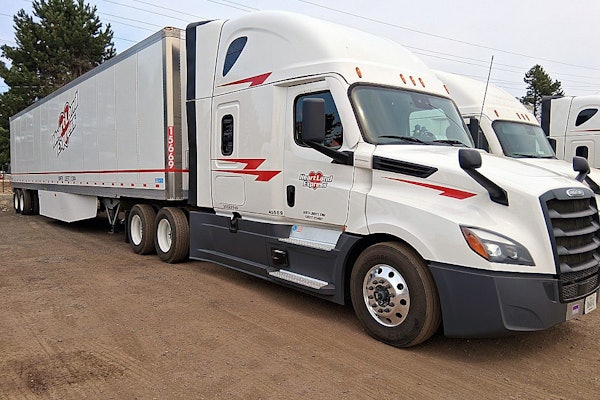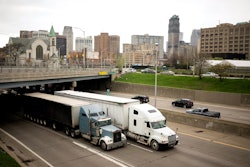Managing geopolitical tensions, especially between the U.S. and China, is one of the primary risks in the transportation industry between 2025 and 2028, according to a four-year review by the U.S. Department of Transportation.
“As China continues to deploy non-market policies and practices that prompt responses from the United States and like-minded trading partners, companies will need to increase resiliency in their sourcing strategies to reduce their exposure to those policies and practices,” the report said.
The White House 2021-2024 Quadrennial Supply Chain Review examined efforts to improve the country’s supply chain resilience and offer key recommendations. It detailed multi-year reviews on supply chains across 10 key sectors, including the transportation industrial base, energy, advanced batteries, critical minerals, agri-food, public health/biological preparedness, pharmaceuticals/active pharmaceutical ingredients, information/communications technology, semiconductors, and defense.
“In less than four years, we’ve gone from supply chain disruptions unlike anything we’ve seen in peacetime, to much higher levels of resiliency and reliability,” said U.S. Transportation Secretary Pete Buttigieg. “That work has helped make it possible to move record levels of cargo in and out of the U.S., bring shipping costs down, and ensure essential goods arrive on time.”
Among transportation issues, climate-related issues are also highlighted as risks. The report noted that the increasing frequency and intensity of hurricanes, wildfires, and floods are projected to threaten critical infrastructure, including ports, highways, and railways.
Meanwhile, DOT expects strict environmental regulations aimed at cutting carbon emissions and noise pollution to accelerate the shift toward alternate fuels and cleaner logistics systems. “This will create challenges but also opportunities, as businesses that adopt sustainable practices will benefit from improved operational efficiency and regulatory compliance,” the report said.
Another pressing issue is the rising risk of cyberattacks on transportation infrastructure. As the industry becomes more digitized, these threats grow, potentially disrupting logistics networks or compromising data security. “Protecting these digital systems will require robust cybersecurity frameworks and closer collaboration between public and private sectors to prevent and mitigate potential disruptions,” DOT stated.
The report also looked at notable undertakings in the industry, listing DOT’s initiatives to boost recruitment, training and diversity, particularly in the trucking sector. “DOT has significantly expanded trucking apprentice programs across the country. These programs offer structured training and mentorship opportunities for aspiring truck drivers, aiming to attract more individuals to pursue careers in trucking. By doubling the number of these programs, DOT seeks to address staffing issues experiences by trucking companies.” It said.
Acknowledging the bureaucratic challenges that can discourage individuals from pursuing trucking careers, DOT said it has taken steps to simplify the process of obtaining a CDL. It also established a Women of Trucking Advisory Board to encourage women to go into the industry.
The report also mentioned that financial support has been provided by DOT to support states in expediting the issuance of CDLs. “Grants totaling over $44 million have been allocated to states, enabling them to enhance their CDL issuance systems, improve training programs and streamline administrative processes,” it said.
In collaboration with the U.S. Department of Labor, DOT also launched the Trucking Action Plan, which includes new apprenticeship programs and a pilot initiative to recruit drivers aged 18 to 21. The efforts are designed to stabilize the trucking workforce and create long-term career pathways to attract and retain talent, the report noted.
It also listed other milestones such as the bipartisan infrastructure law funding and the office’s Freight Logistics Optimization Works (FLOW) program, which has supported data sharing between freight carriers, cargo owners, logistics providers, port operators and trade associations.
Other recommendations included the need for data-driven supply chain management, encouraging companies to adopt digital tools like AI, blockchain, and real-time dashboards to monitor logistics and forecast potential disruptions.
Improved data sharing between the public and private sectors was also noted as essential for improving visibility and responding to crisis more efficiently.













